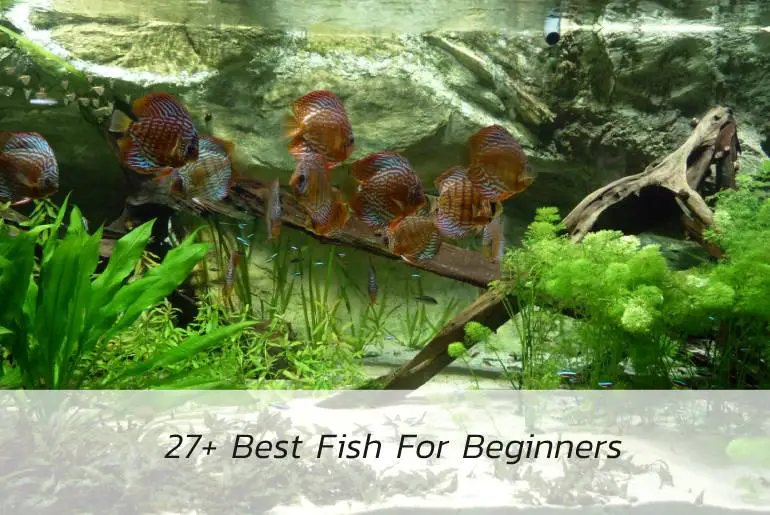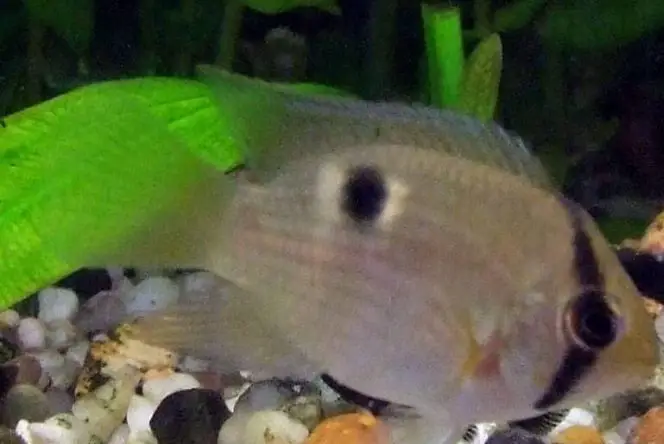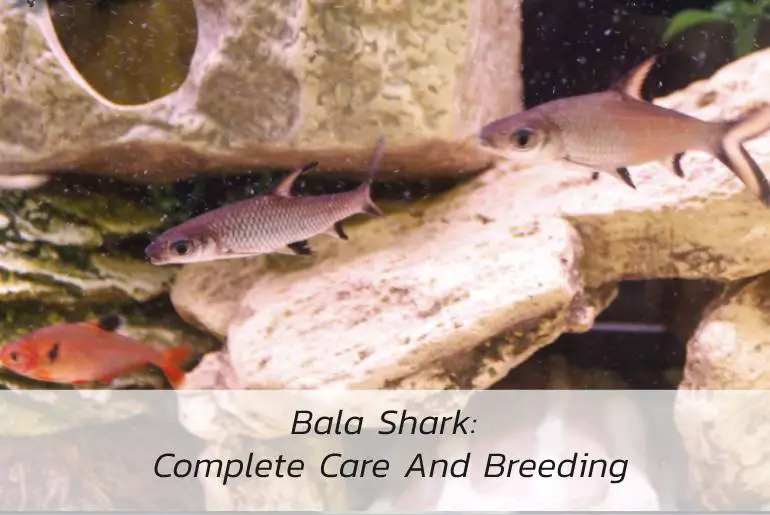Are you new to the world of aquariums and fish? If so, then you may be wondering what types of fish are best for beginners. It can be tough to choose the right fish when there are so many different options available. And definitely, the fish best for me might not be the best for you. But that’s okay! So, what are the best fish for beginners?
There are many best fish options available for beginners. Some very popular fish that a novice can also keep with ease are Mollies, Platies, Swordtails, Tetras, Danios, and Gouramis. In addition to this, some fish, like Kuhli loach, Oscar, Catfish, Killifish, Plecostomus, Tiger Barb, and Rainbow shark, are hardy and can live in a beginner’s tank.
However, before you choose any fish, it is important that you do your research. The list given above is only a few to name. Even a beginner has very wide options to choose from when it comes to fish keeping. And today, we will be discussing each of these fish in brief.
So, if you have just started keeping fish or planning to, this post is mainly for you!
Things Beginners Should Know Before Keeping Fish
I guess you already know that succeeding in a war is impossible without knowing about the basics and different tools. Although, it is unfair to compare fishkeeping with war. But before keeping a fish learning some of the basics is the most.
I would not say to mug up everything about fish keeping, experience will teach you more eventually. But here are some of the things a beginner should know.
Different Types Of Aquariums
There are different types of aquariums in the market depending on the material used to make them. The most common ones are made of glass or acrylic. There is also a third type which is a custom-made fish tank.
It all depends on your budget and the type of fish you want to keep. If you are a beginner, I would suggest going for a glass aquarium.
What Size Should Your Aquarium Be?
This depends on the type of fish you want to keep and how many fish you want in your tank. For example, if you want to keep goldfish then a 20-gallon tank is enough. But if you want to keep a shark, then obviously you will need a much bigger fish tank.
What Type Of Fish Should You Get?
This is a very important question. You need to do some research on the type of fish you want to keep. Some fish are peaceful while others are aggressive. Some fish need a lot of space while others can live in a small tank. You also need to consider the water temperature that your fish will be comfortable in.
If you are just beginning, I would suggest going for a peaceful fish like goldfish or guppies. They are easy to care for and don’t need a lot of space.
What Else Do You Need?
Besides the fish tank and the fish, you will also need some other things. Such as:
Filter
The most important tool in keeping the water quality high and the fish healthy is the filter. There are many different types of filters on the market, but for beginners, we recommend a hang-on-back (HOB) filter.
Heater
A heater is necessary to maintain a consistent water temperature. The type of heater you need will depend on the size of the aquarium. For a 20-gallon tank, we recommend a 150-watt heater. Especially if you decide on keeping tropical fish, a heater is a must for maintaining the required temperature.
Lights
Aquarium lights are not necessary for the fish, but they will make your aquarium look more attractive. Moreover, lights also make your tank inhabitants visible so that you can enjoy watching them. If you choose to add lights to your aquarium, we recommend LED lights.
Substrates And Decorations
The substrate is the material you use to line the bottom of the aquarium. There are many different types of substrates, but for beginners, we recommend using gravel. Gravel is easy to clean and maintain. Decorations are not necessary, but they can help make the aquarium more aesthetically pleasing.
Live Plants
Live plants are a great addition to any aquarium. They help to oxygenate the water and provide hiding places for the fish. If you are new to keeping fish, we recommend choosing plants that are easy to care for. Some good options for beginner fish keepers include Java fern and Anubias.
Fish Supplies
Some basic fish supplies you will need include a net, fish food, and a water conditioner.
- A net is used to catch fish and move them from one tank to another.
- Fish food comes in many different forms, but we recommend pellets or flakes for beginners.
- A water conditioner is used to remove chlorine and other chemicals from the tap water that can be harmful to fish.
- An air pump is also necessary to maintain the water quality and to circulate the water in the aquarium.
- A protein skimmer will help to remove the waste from the water and make the water clean.
Along with this, you will also need a fish net, fish food, and a water testing kit.
So, make all these things ready with you before you go to choose the best fish.
Some Tips For Beginners To Maintain Their Fish Tank
When you first start keeping fish, it can be a bit daunting. You might as well face various problems like your fish might get sick or the water might get dirty.
But, once you get into a routine, it becomes much easier. Here are some tips to help beginners maintain their fish tank:
- Clean the tank regularly. Depending on the size and number of fish in your tank, you will need to clean it anywhere from once a week to once a month.
- Change the water regularly. You will need to change the water in your tank every week or two.
- Feed your fish a balanced diet. Fish should be fed once or twice a day, depending on the type of food you are using.
- Monitor the water quality. You will need to test the water in your tank regularly to make sure the levels of ammonia and nitrites are safe for your fish.
- Keep an eye on them always. If you find some of your fish are not looking well, take them out, quarantine them in a separate tank, and talk with a fish veterinarian.
If you follow these few tips, you will be on your way to being a successful fish keeper in no time!
Best Fish For Beginners
When given a lot of beautiful options, choosing the best out of them is a real challenge. Especially when you are completely new, there are different doubts in your mind, and you are not sure what to go for. To make things easier, here is a list of the best fish for beginners that can help you get started in the hobby of fish keeping!
Neon Tetra (Paracheirodon innesi)
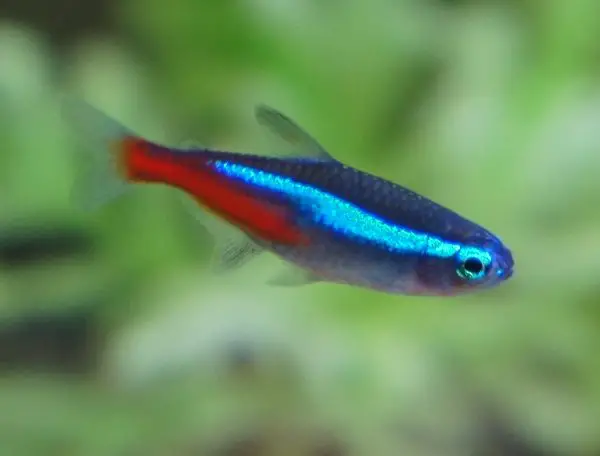
Neon tetras are a type of freshwater fish that are native to the Amazon basin in South America. They are one of the most popular fish for aquariums and make ideal pets for beginners.
Neon tetras are relatively small fish, only growing to be about 4 centimeters in length. They prefer slightly acidic water(pH- 5.5 to 6.2) that is well-filtered and has plenty of hiding places. Neon tetras also do best in tanks that are at least 20 gallons in size. When kept in ideal conditions, neon tetras can live for up to 10 years.
However, they are also susceptible to a number of problems, including Neon Tetra Disease and swim bladder disease. With proper care, though, neon tetras can be a fun and rewarding addition to any aquarium.
Plecostomus (Hypostomus plecostomus)
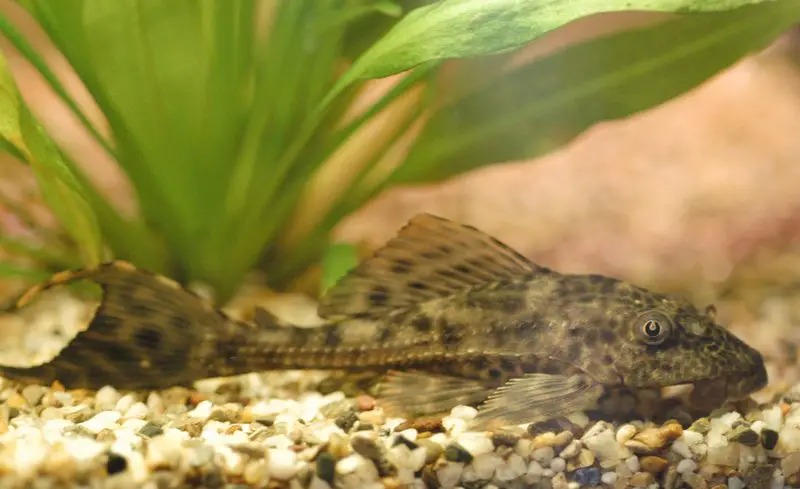
Plecostomus, commonly known as Plecos, is a type of armored catfish native to northeastern South America. They are a popular choice for beginner’s freshwater aquariums due to their unique appearance and ease of care. Plecos are typically dark brown or black in color and can grow to be over 12 inches long. However, there are also dwarf varieties that only reach only about 1.5 inches in length.
When choosing a Pleco for your aquarium, it is important to consider the size of your tank and the water parameters that you can maintain. Plecos are relatively hardy fish, but they can be sensitive to large changes in temperature or pH levels. They also prefer to have plenty of hiding places, so be sure to include plenty of driftwood in their tank.
While Plecos are generally peaceful fish, they can be territorial with each other. It is best to keep only one Pleco per tank unless you have a very large aquarium. With proper care, Plecos can make an ideal addition to any freshwater community tank.
Tiger Barb (Puntigrus tetrazona)

The Tiger Barb is a small, sprightly fish that originates from Borneo and Malaysia, including Sarawak and Kalimantan. It is an ideal fish for beginners due to its hardy nature and small size; Tiger Barbs only grow to be around 2-3 inches in length. The ideal tank size for Tiger Barbs would be at least 20 gallons. So, when keeping this fish, it is important to keep water parameters in mind. Tiger Barbs prefer neutral to slightly acidic water with a moderate flow.
The environment should also be taken into consideration when setting up a tank for Tiger Barbs; since they are such active swimmers, they require plenty of open space to move around. Related problems can also arise when keeping this fish; for example, fin nipping often occurs when Tiger Barbs are kept in too small of a tank or are not provided with enough hiding places.
Otocinclus
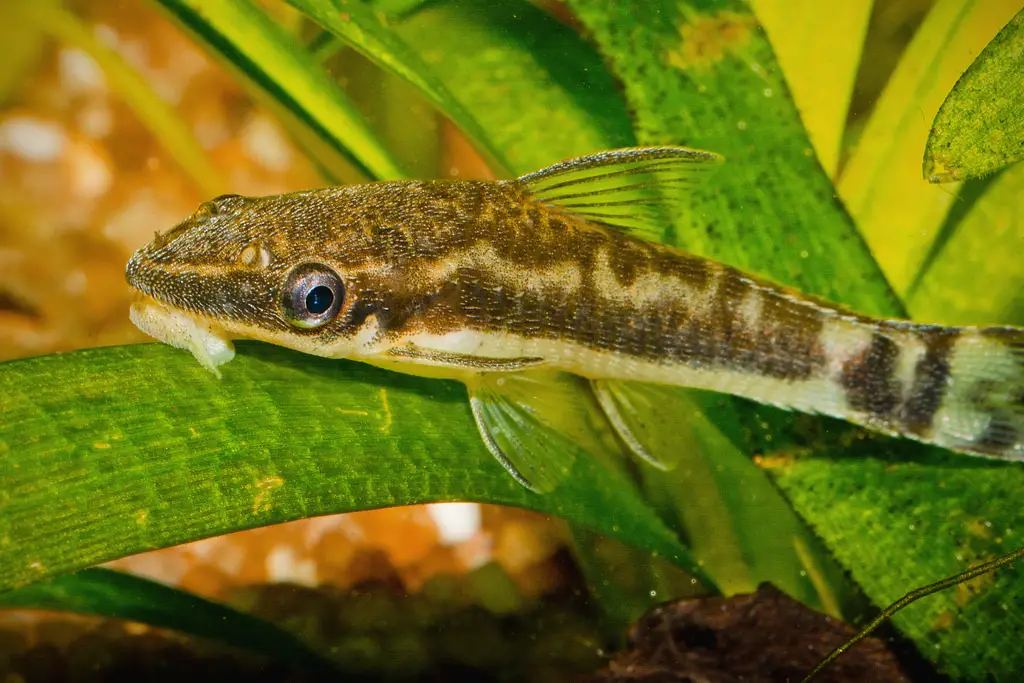
Otocinclus is a genus of small freshwater fish native to South America. These fish are often referred to as ” algae eaters” due to their diet of soft algae and detritus. They are a popular choice for beginner aquarium hobbyists due to their small size (1 to 2 inches) and peaceful nature.
However, there are a few things to keep in mind when keeping Otocinclus. First, they are very sensitive to water parameters and should only be kept in an established tank with stable water conditions. Second, these fish are social creatures and should be kept in groups of 6 or more.
Finally, because they are so small, Otocinclus are susceptible to being eaten by larger tankmates. For these reasons, it is best to keep Otocinclus in a tank of at least 10 gallons, with other peaceful fish of similar size.
Kuhli Loach (Pangio kuhlii)
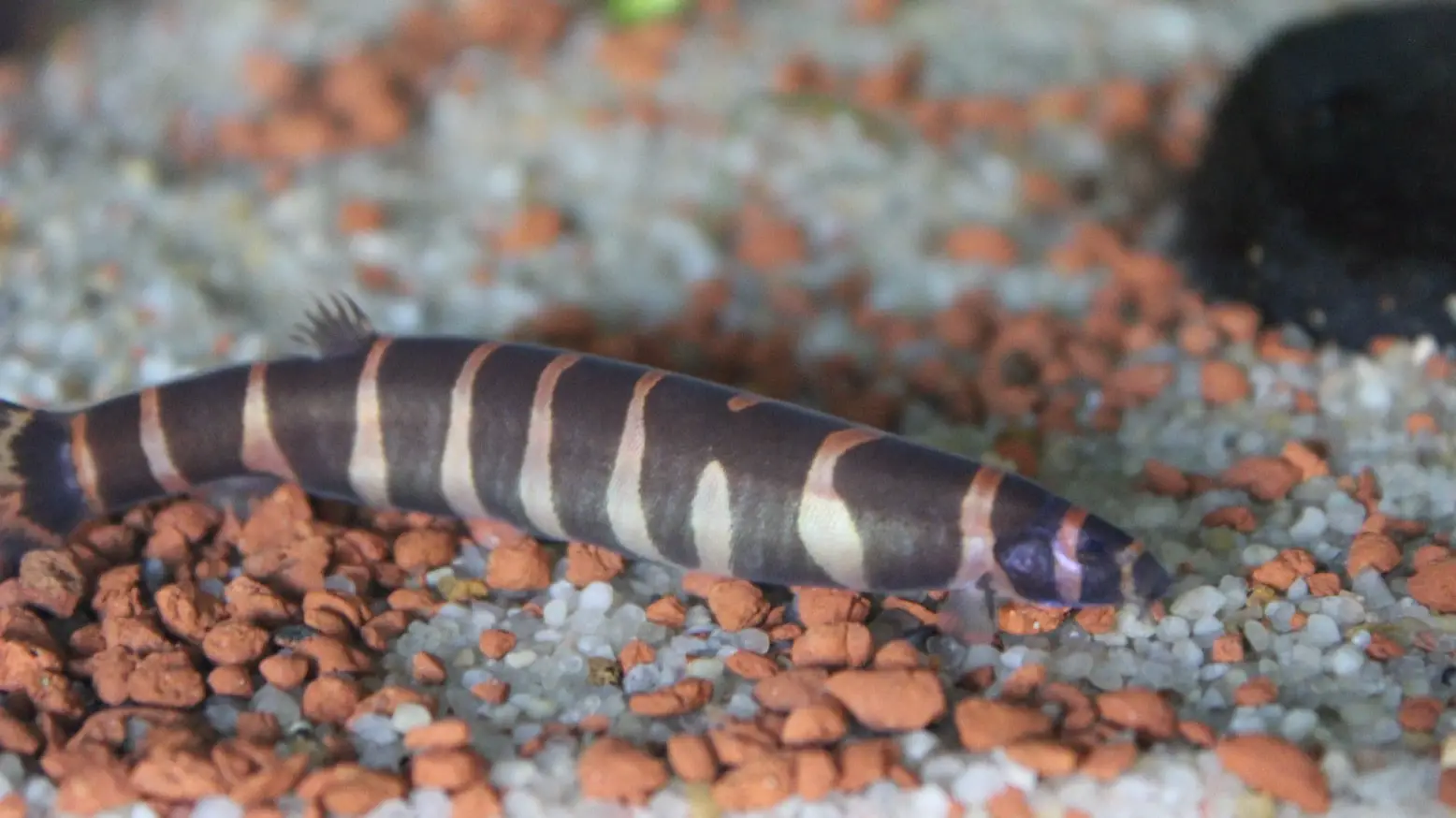
The Kuhli Loach originates from Southeast Asia (Indonesia and the Malay Peninsula) and is a popular freshwater aquarium fish. It is easily distinguished by its long, slender body and eel-like appearance. The Kuhli Loach grows to a maximum length of 4 inches and is relatively easy to care for, making it a great choice for beginner aquarists.
When keeping Kuhli Loaches, it is important to maintain stable water conditions and provide plenty of hiding places. These fish are shy and peaceful by nature but can become stressed if they do not have adequate cover. Kuhli Loaches are also known to be sensitive to changes in water quality, so regular water changes are essential.
The ideal tank size for Kuhli Loaches is 15 gallons or larger. With proper care, these fascinating fish can thrive in the home aquarium and provide years of enjoyment.
African Cichlid (Pseudotropheus sp.)
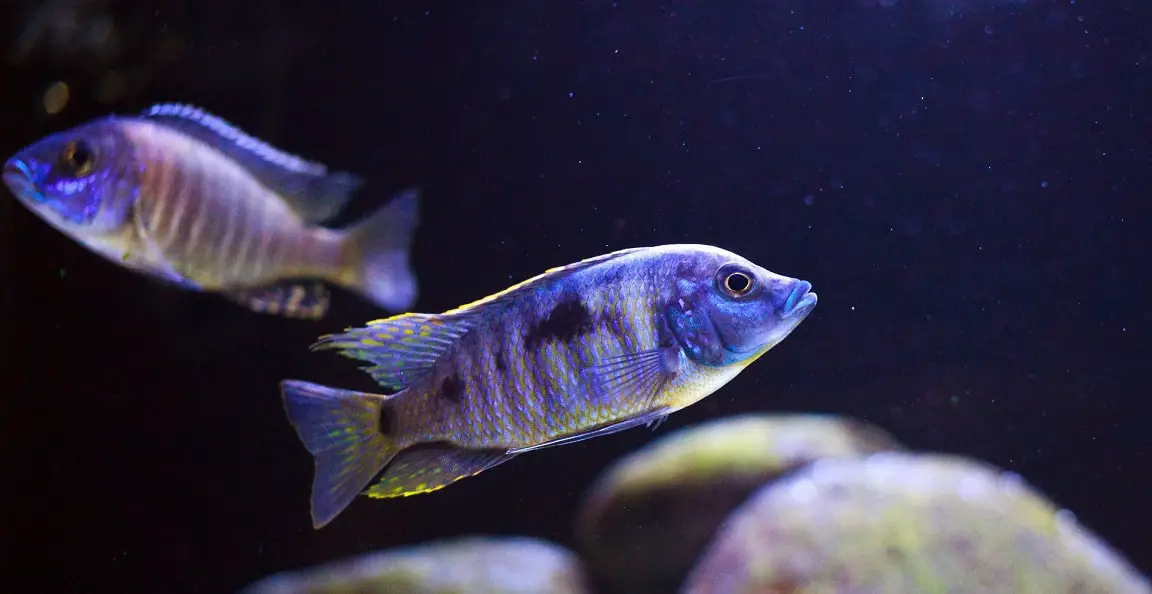
African Cichlid originates from the Lake Tanganyika of Africa. The fish found in the rift lakes are brightly colored and medium to large in size (two to twelve inches long). They show a wide variety of behavior, including aggression, feeding habits, and brood care.
African Cichlid is the best fish for beginners because they are very hardy fish and can live in a wide range of water parameters. African Cichlid can also deal with a wide range of tank sizes (the ideal is 30 gallons). However, related problems might occur when different species of African Cichlid are kept together in one tank because they might not be able to tolerate each other’s aggression.
But when keeping African cichlids, it is important to keep in mind their origin and natural environment so that you can provide them with the best possible conditions for them to thrive.
Bristlenose Pleco

The Bristlenose Pleco is a freshwater fish that comes from South America, Amazon River Basin. It is a popular choice for beginner aquarium enthusiasts because it is relatively easy to care for. This fish requires a tank size of at least 40 gallons and prefers water with a neutral pH range and moderate hardness. It is important to provide plenty of hiding places in the tank, as the Bristlenose Pleco is a timid fish.
These fish are also relatively slow-growing (grows to only 5 inches in 2 years), so they do not require as much food as other species. One downside of keeping Bristlenose Plecos is that they can be susceptible to Ich and other diseases if they are kept in poor water conditions. However, as long as they are well-cared for, these fish can make peaceful and interesting additions to any freshwater aquarium.
Cory Catfish (Corydoras paleatus)

The Corydoras catfish originates from the lower Paraná River basin and coastal rivers in Uruguay and Brazil, where it can be found in tropical waterways. It is a small fish, typically only growing to be 2-3 inches long. The Cory catfish is a peaceful bottom feeder that does well in a community tank. It is recommended for beginner fish keepers because it is relatively easy to care for. It is important to maintain stable water parameters and provide a clean environment when keeping this fish.
A Cory catfish should be kept in a tank that is at least 20 gallons in size. Larger tanks are better, as they provide more space for the fish to move around and establish their territory. Cory catfish are known to sometimes suffer from swim bladder disease, which can be caused by poor water conditions or an unsuitable diet. Nevertheless, by providing a clean and spacious environment, you can help to prevent this problem.
Dwarf Gourami (Trichogaster lalius)
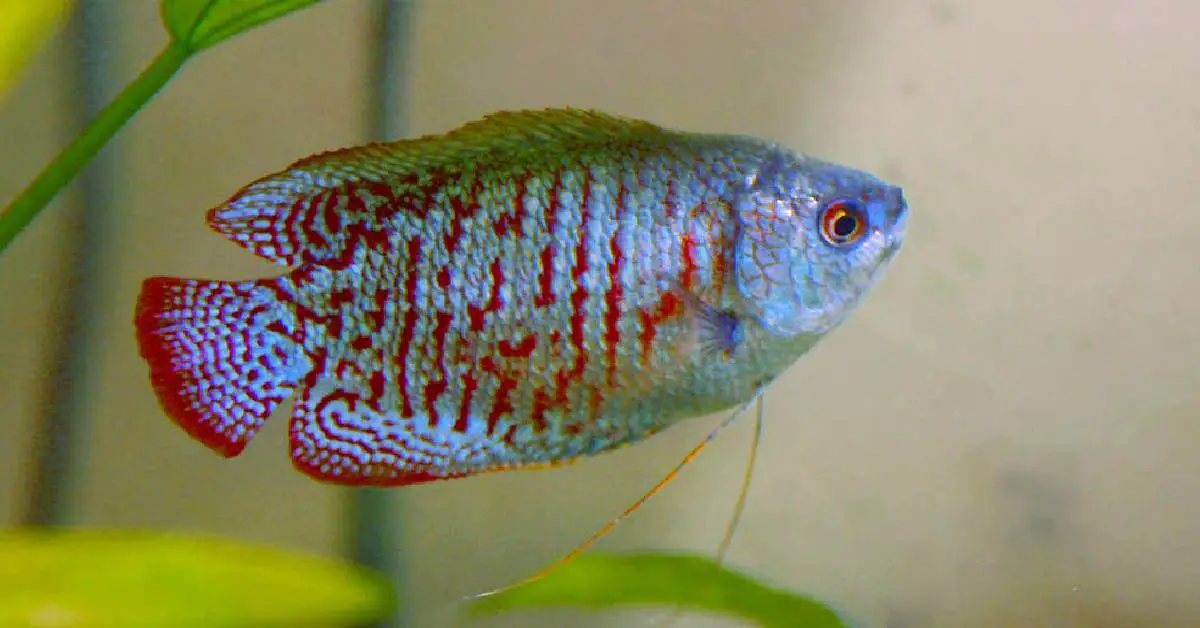
Dwarf gouramis are a popular choice for beginner fishkeepers, as they are relatively easy to care for and don’t require a large tank. They are native to thickly vegetated water of India, West Bangal, Assam and Bangladesh. These peaceful fish typically grow to be about 4.5 inches long. When keeping dwarf gouramis, it’s important to maintain appropriate water parameters – they prefer warm water with a little acidic pH and moderate hardness.
Additionally, dwarf gouramis do best in tanks with plenty of plants and hiding places, as they are shy fish. Tank size should be at least 5 gallons for a single fish, and larger if you plan on keeping more than one.
Dwarf gouramis are also susceptible to several related problems, including dwarf gourami iridovirus (DGIV) and Columnaris disease. But, as long as you provide them with a good environment and keep an eye on water quality, dwarf gouramis make great first fish.
Guppy (Poecilia reticulata)
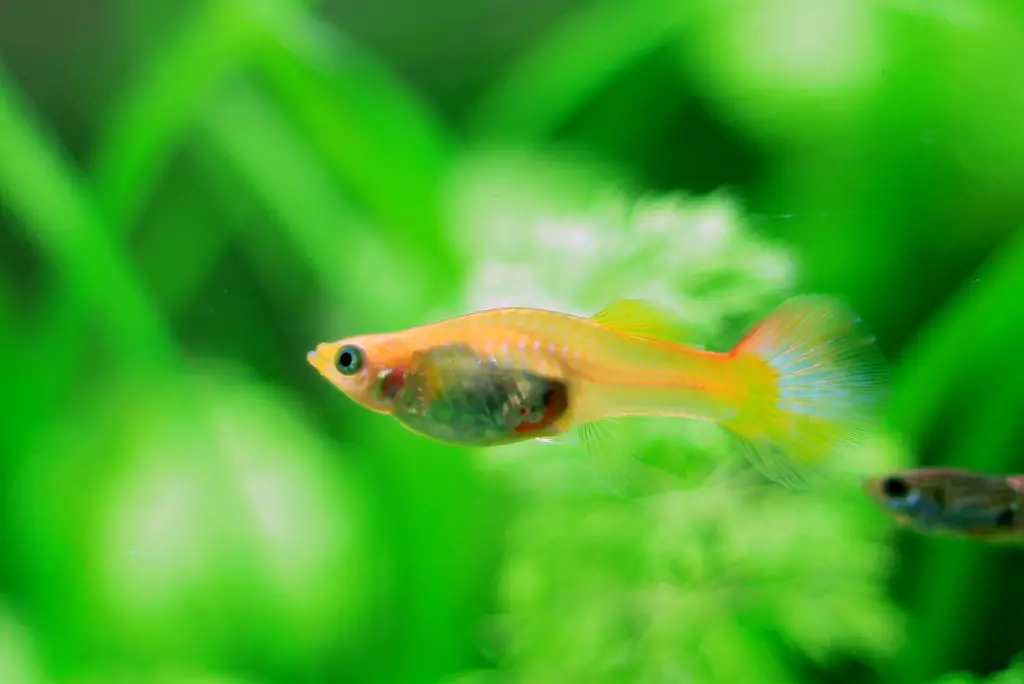
Guppies are one of the easiest fish to take care of. Thus, they are an excellent choice for beginners. These brightly-colored fish originates from northeast South America and can grow to be about two inches long. While they can tolerate a wide range of water parameters, they prefer warm water and should be kept in an aquarium that is at least 10 or 20 gallons.
Guppies are also social creatures and do best when kept in groups of 3 to 4. When it comes to related problems, one thing to keep in mind is that guppies are prolific breeders. As a result, beginner aquarists may quickly find themselves overwhelmed with fry if they don’t take steps to prevent breeding. Well! with a little bit of care, guppies can make a great addition to any aquarium.
Killifish (Fundulus majalis)
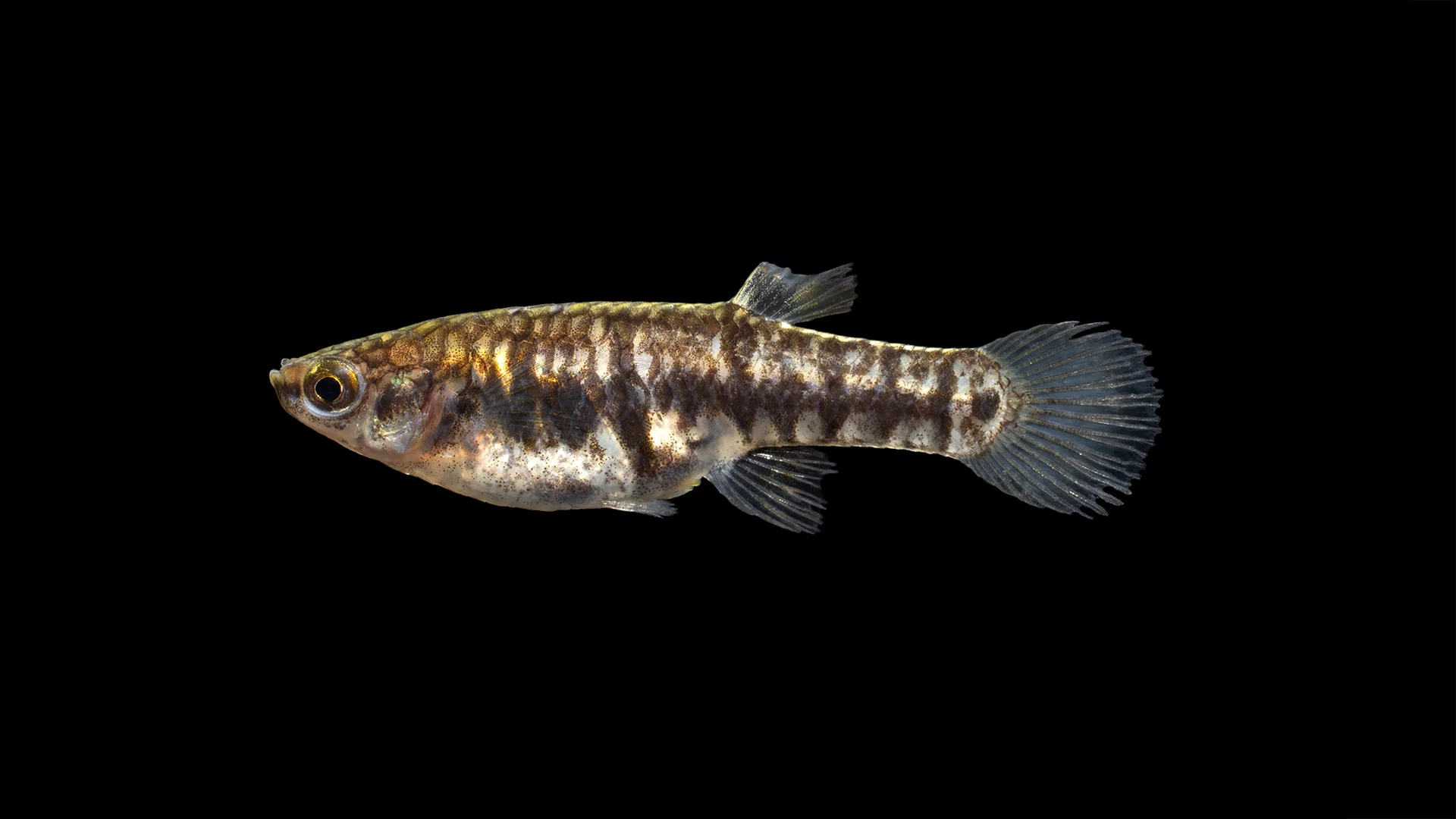
Killifish are a popular choice for beginner aquarium hobbyists due to their origin, size, and water parameters. These fish are native to Africa and grow to be about 1 to 2 inches in length. They prefer water that is neutral to slightly alkaline with a temperature range of 68-75 degrees Fahrenheit.
When selecting a tank for killifish, it is important to choose one that is at least 5 gallons in size. This will provide enough space for the fish to swim and avoid aggressive behavior. It is also important to choose a tank with plenty of hiding places, as these fish are shy by nature.
One of the most common problems associated with keeping killifish is stress-related illnesses. This can be avoided by providing the fish with a peaceful environment and placing them in a tank that is the proper size.
Just provide your killifish with whatever care they need and you will never regret having them.
Pearl Gourami (Trichopodus leerii)
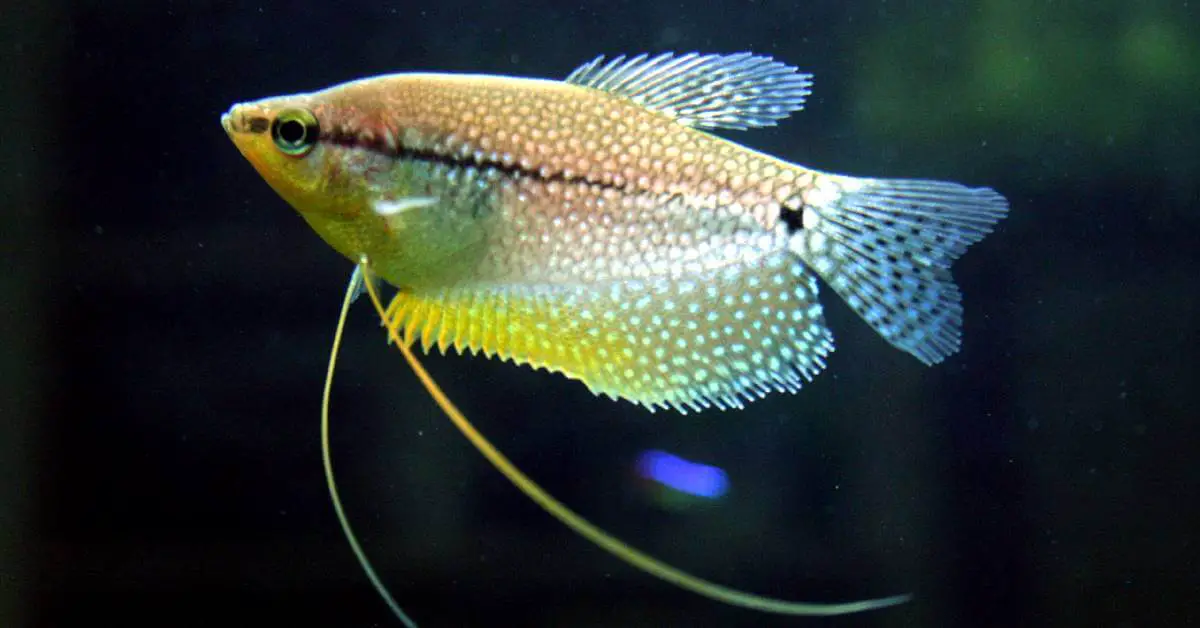
Native to Southeast Asia (Thailand, Malaysia, and the islands of Borneo and Sumatra), the Pearl Gourami is a peaceful and relatively easy to care for fish. Hence, they make an ideal choice for beginner aquarists. They are small fish, typically growing to be between four and five inches in length, and they are well suited to living in a wide range of water conditions.
In terms of tank size, a Pearl Gourami will do well in a minimum 30-gallon tank, though a larger environment is always better. It’s important to create a well-planted aquarium with plenty of hiding places, as this will help reduce stress levels.
Unfortunately, Pearl Gouramis are susceptible to long-term health problems if they are kept in poor water conditions or if their diet is not well balanced. But, if these issues are avoided, then the Pearl Gourami can make a beautiful and enjoyable addition to any aquarium.
Pictus Catfish (Pimelodus pictus)
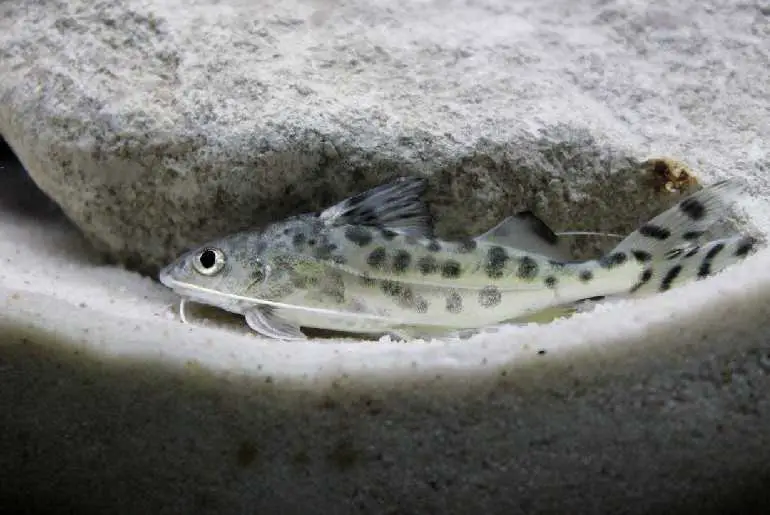
The Pictus Catfish is a popular choice for beginner aquarium enthusiasts. These fish are native to South America and typically only grow to be about five inches long. They are relatively hardy fish and can tolerate a wide range of water parameters, making them easy to care for.
Pictus Catfish also do well in a variety of different environments, from planted tanks to more open spaces. However, because they are such active swimmers, they need a tank that is at least 50 gallons in size. However, bigger and taller tanks are even better.
One problem that is often associated with Pictus Catfish is fin nipping. This can be prevented by keeping these fish with other peaceful tank mates that are similar in size. Overall, the Pictus Catfish is a great choice for those just starting out in the hobby. With a little bit of care, these fish can thrive in a wide variety of tanks.
Rainbow Shark (Epalzeorhynchos frenatum)
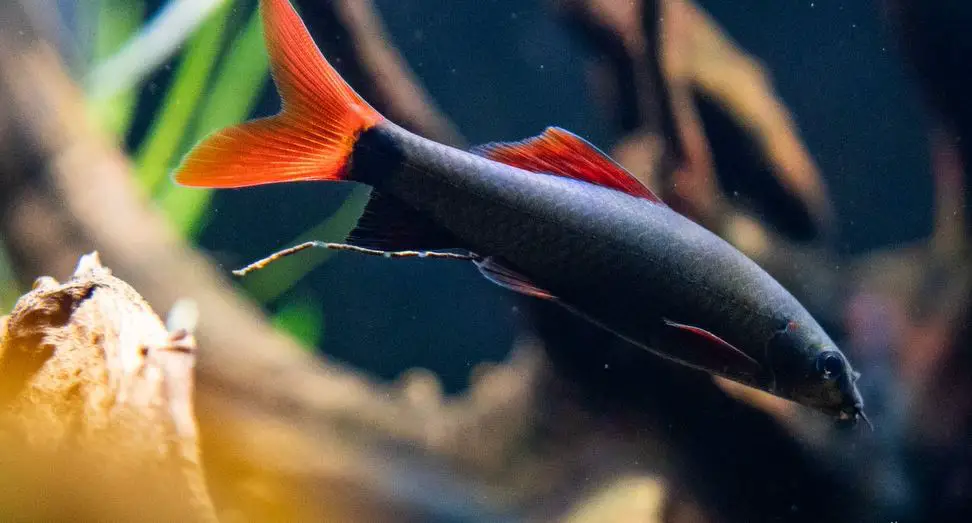
If you are a beginner in keeping fish as pets, the rainbow shark is a perfect type of fish for you. The rainbow shark originates from Southeast Asia and it thrives best in freshwater. It is a small-sized fish that only grows up to 6 inches.
When kept as a pet, the water parameters you must maintain are a temperature of 72 to 81 degrees F, a neutral pH level (6-8), and hardness of 5 to 11 dGH. The environment inside the tank should also be dimly lit with plenty of places for the fish to hide. A minimum tank size that can accommodate a single rainbow shark is 55 gallons since they are semi-aggressive by nature.
Some related problems that you may encounter when keeping rainbow sharks are sudden changes in their behavior like becoming territorial which can lead to them attacking other tank mates. They may also uproot plants inside the tank when looking for food so it is best to keep an eye on them.
Despite these potential problems, rainbow sharks are still relatively easy to care for which makes them ideal pets for beginners who are still getting the hang of things.
Zebra Danio (Danio rerio)
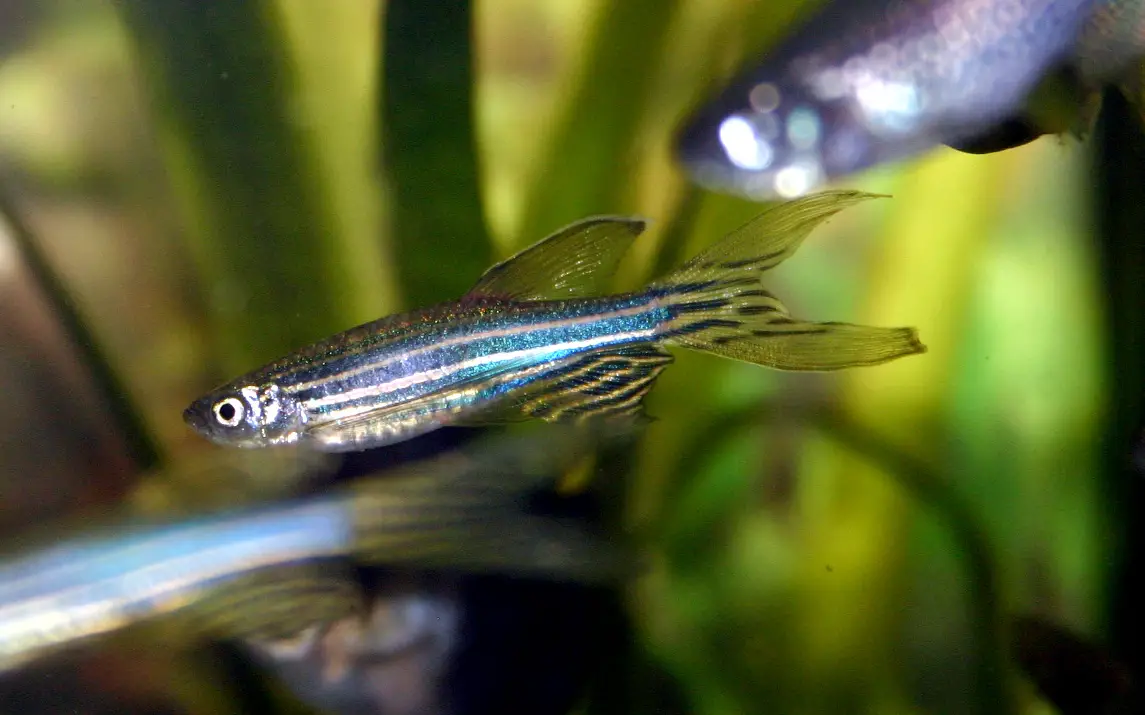
Zebra Danios are a popular choice for beginners due to their small size and relatively straightforward care requirements. Native to Southeast Asia (from Maynmar in the east to Pakistan in the west), these lively little fish typically only grow to be about 2.5 inches long.
In terms of water parameters, Zebra Danios prefer neutral to slightly alkaline water (pH: 7-7.8) with a soft to moderate level of hardness. They are also relatively tolerant of a wide range of temperatures, though they prefer waters that are on the cooler side (64–77°F). As far as tank size goes, a 10-gallon aquarium is sufficient for a small group of Zebra Danios.
These fish are also relatively easy to feed, and they will generally do well on a diet of flake food and frozen or live insects. One potential issue to be aware of with Zebra Danios is their propensity to jump out of aquariums that are not properly covered. As such, it is important to make sure that your tank has a tight-fitting lid in order to prevent any escapees.
Overall, Zebra Danios are hardy little fish that make an ideal choice for beginner aquarists. With just a few simple guidelines in mind, you can provide these cheerful fish with the ideal environment for them to thrive.
Cardinal Tetra (Paracheirodon axelrodi)
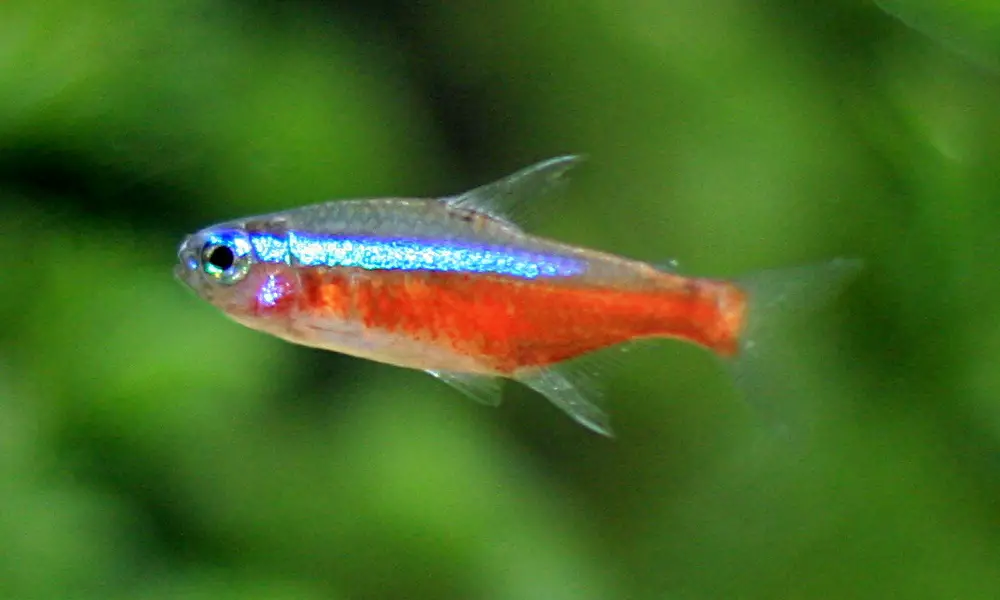
The Cardinal Tetra is a peaceful freshwater fish that originates from the rivers of South America (upper Orinoco and Negro Rivers). It is a popular choice for beginner aquarium enthusiasts because it is relatively hardy and easy to care for. This fish grows to be about 2 inches in length and prefers water with a pH level of 4.6-6.2 and a temperature of 73–81°F.
Cardinal Tetras should be kept in an aquarium with plenty of hiding places and plants, as they are shy fish. A minimum tank size of 20 gallons is recommended for keeping Cardinal Tetras.
Some related problems that might occur when keeping this fish include swim bladder disease and neon tetra disease. With proper care, however, Cardinal Tetras can make a beautiful and low-maintenance addition to any freshwater aquarium.
Convict Cichlid (Amatitlania nigrofasciata)
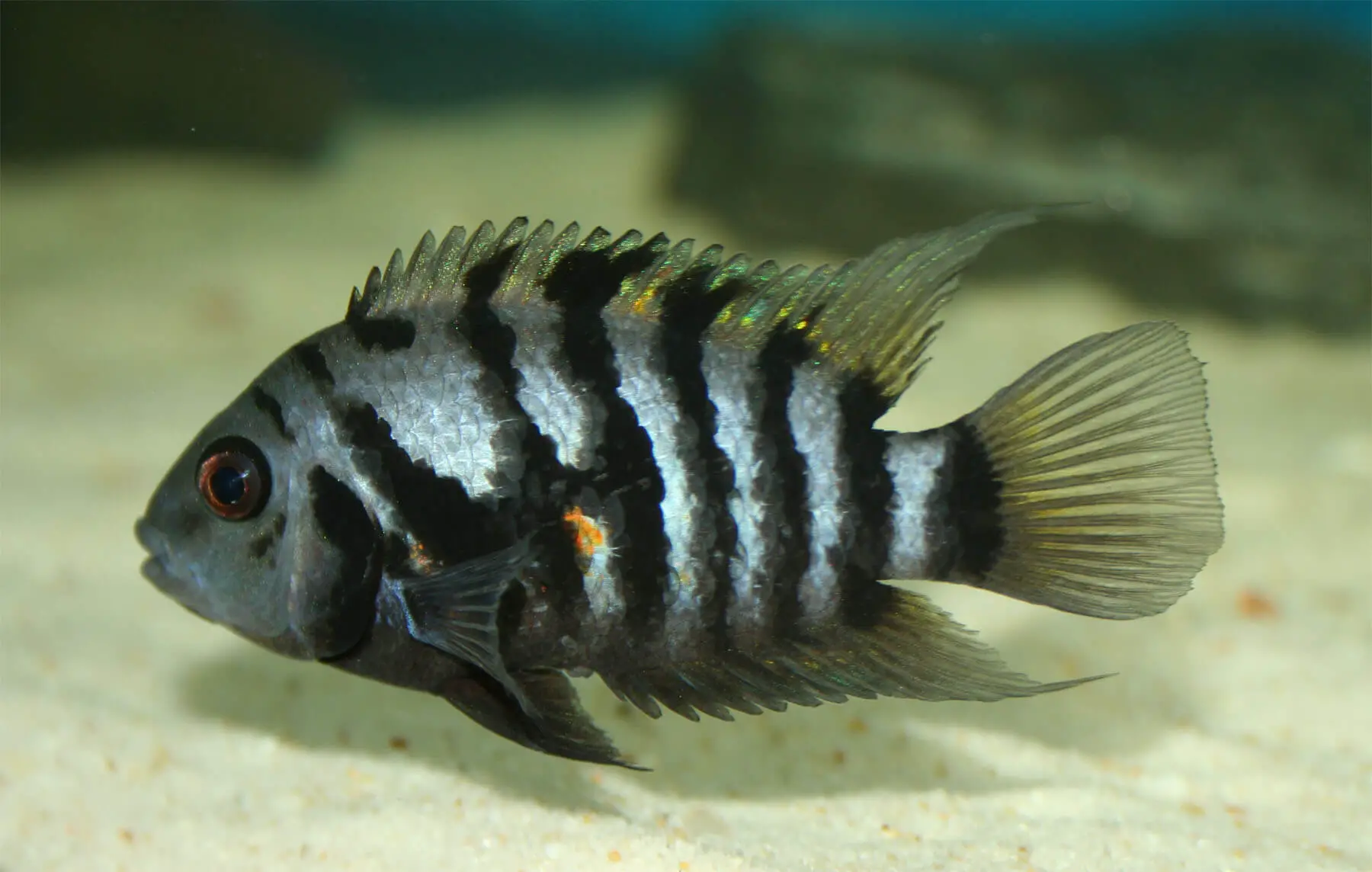
The Convict Cichlid is a popular choice for beginner fishkeepers, and it’s not difficult to see why. These cichlids originate from Central America, where they can be found in slow-moving rivers and streams. They are small fish, reaching a maximum size of around 4 to 5 inches, and it’s relatively easy to care for. Water parameters are also relatively forgiving, and the Convict cichlid is tolerant of a wide range of temperatures and water hardness levels.
In terms of environment, the Convict cichlid is happiest in a tank with plenty of hiding places. driftwood, caves, and plants all make good choices. The best tank for keeping a Convict cichlid is a 30-gallon tank.
However, it’s worth noting that the Convict cichlid can be aggressive, especially when breeding. As a result, it’s best to keep only one fish per tank or to choose tankmates carefully. Other than that, the Convict cichlid is a hardy fish that makes an ideal choice for beginner aquarists.
Discus Fish (Symphysodon)
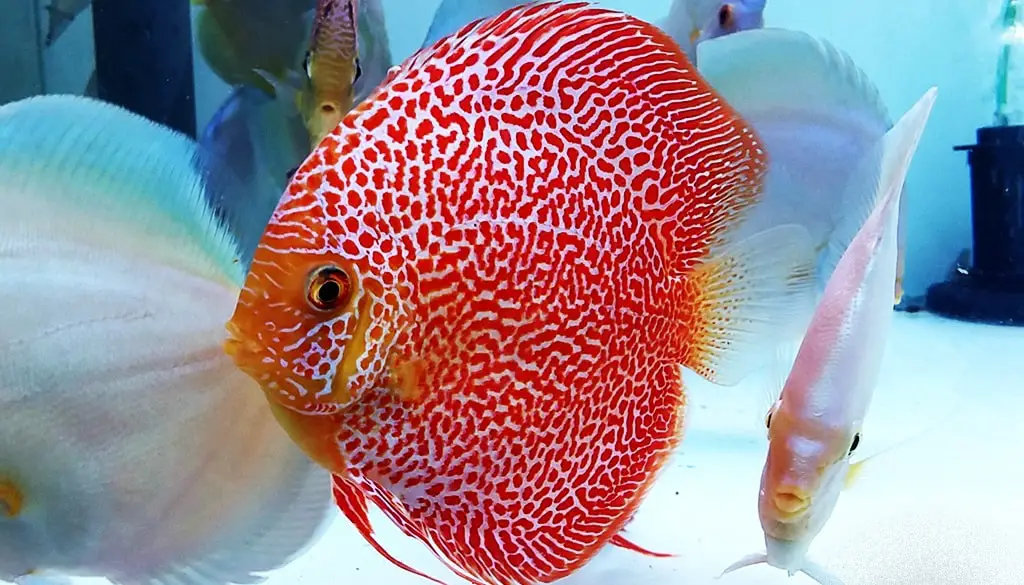
Discus are a popular species of freshwater fish that originates from the Amazon Basin. They are known for their unique shape and bright coloration, and they are a popular choice for both beginner and experienced aquarium keepers alike.
When kept in captivity, discus can reach up to 8 inches in length. They prefer warm water (82° and 86° F) with a slightly acidic pH (6 to 7) and a moderate level of hardness (1° and 4° dKH). In the wild, discus fish live in slow-moving rivers and lakes with plenty of vegetation.
When choosing a tank size for your discus, it is important to keep in mind that they need at least 7 gallons per fish. They are also a social species, so it is best to keep them in groups of at least five individuals. For this, you need a tank that is a minimum of 50 gallons.
Common health problems associated with discus include bacterial infections, parasites, and malnutrition. But if you care for them well, discus can be a hardy and rewarding addition to any aquarium.
Harlequin Rasbora (Trigonostigma heteromorpha)

The origin of Harlequin Rasbora is in South East Asia. It is a peaceful and hardy fish which makes it best for beginners. The size of an adult fish is around 2 inches. The ideal water parameters for keeping this fish are a pH level between 6.0-8.0, water hardness 5-19 dGH, and a temperature range of 22-28 degrees Celsius.
It is important to keep this fish in a group because it is a social fish; the recommended tank size is at least 10 gallons. When kept in an overcrowded tank, these fish may develop stress-related problems such as black spots or diseases. Overall, Harlequin Rasbora is a great beginner’s fish because it is easy to care for and very peaceful.”
Sparkling Gourami (Trichopsis pumila)
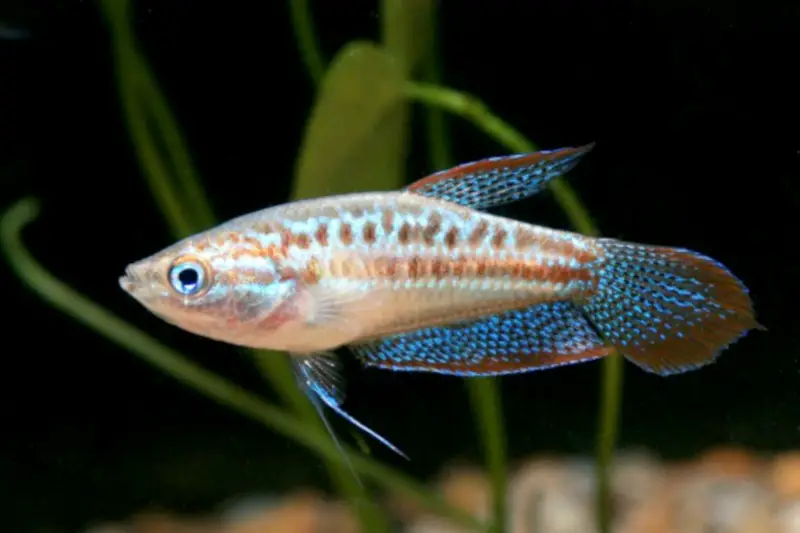
The Sparkling Gourami is a labyrinth fish, which means it has a specialized organ that allows it to breathe directly from the surface. This makes it a good choice for beginners, as it can tolerate a wide range of water conditions. Originated from Southeast Asia, Sparkling Gouramis are usually peaceful fish that grow to around one and a half inches in length.
In the wild, they can be found in slow-moving or still waters, such as marshes, ponds and rice paddies. When kept in captivity, they should be kept in a tank of at least 15 gallons, with soft to medium hardness water (5 – 16 dKH) and a neutral pH level. They prefer a densely planted tank with plenty of hiding places.
As Sparkling Gouramis are timid fish, they may become stressed if kept with more aggressive species. They are also known to jump out of tanks, so it is important to make sure the tank is well covered with the lid. All in all, the Sparkling Gourami is a hardy and easy-to-care-for fish that makes a great choice for beginner aquarists.
Bolivian Cichlids (Mikrogeophagus altispinosus)

The Bolivian cichlid (Mikrogeophagus altispinosus) is a small, peaceful freshwater fish that originates from the Amazon River Basin in Bolivia. It is a popular choice for beginner aquarium hobbyists because it is relatively easy to care for and is not aggressive towards other tank mates.
Bolivian cichlids are typically between 2 and 3 inches in size, and they do best in an aquarium with moderate water flow and plenty of hiding places. Aquariums for Bolivian cichlids should be at least 20 gallons in size, and the water should be maintained at a pH of 6.0-7.5 and a temperature of 72-79 degrees Fahrenheit.
Although Bolivian cichlids are not particularly susceptible to disease, they can be sensitive to changes in water parameters and may experience stress if their environment is not well-suited to their needs. Therefore, it is important to do your research before setting up an aquarium for Bolivian cichlids to ensure that they will thrive in their new home.
Platies (Xiphophorus maculatus)

Platies are small, brightly-colored freshwater fish that originates from Central America and southern Mexico. They are a popular choice for beginner aquarium owners because they are relatively easy to care for and can tolerate a wide range of water conditions.
Platies are typically 2-3 inches in size and can live for up to 4 years with proper care. When keeping platies, it is important to maintain the water temperature between 70°-80°F and to use a filter that is rated for at least double the size of your tank.
Platies are social creatures and do best in groups of 3 or more, so be sure to select a tank that is at least 10 gallons in size. Common health problems associated with platies include swim bladder disease and fin rot. But with regular check-ups and a consistent care routine, these problems can be easily avoided.
Corydoras (Corydoras paleatus)
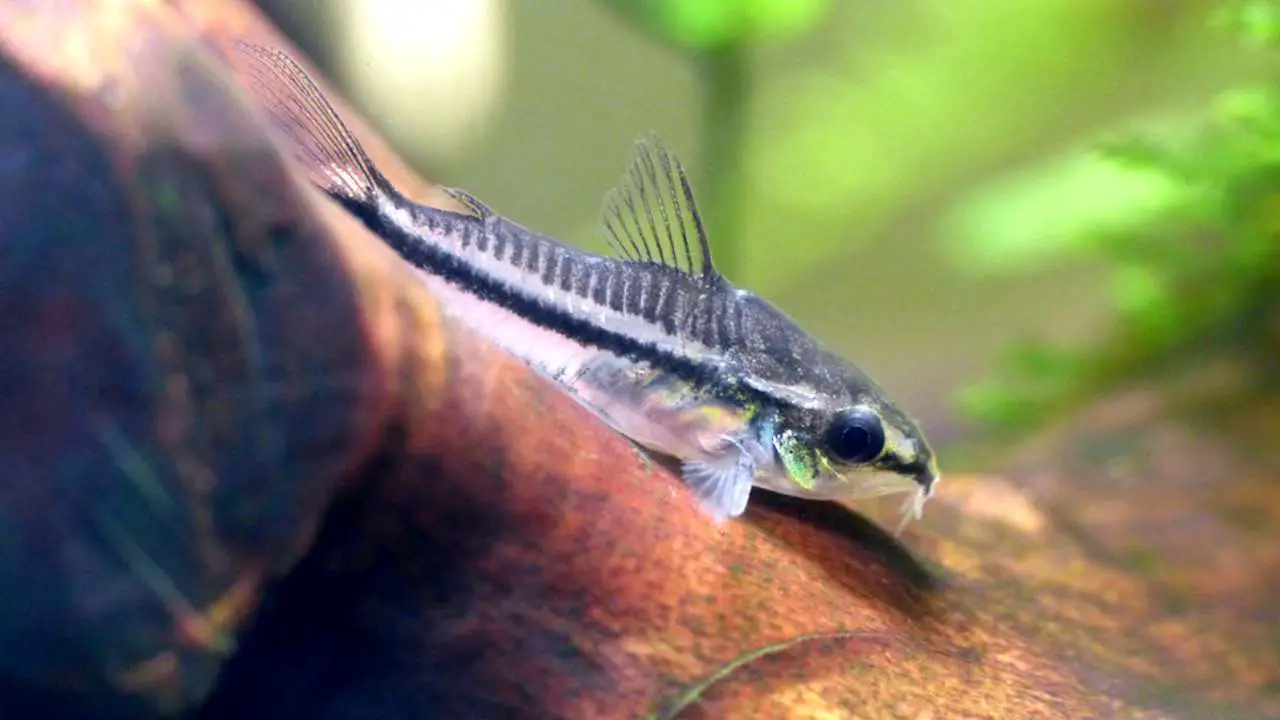
Corydoras are a popular type of fish among aquarium enthusiasts. These bottom-dwelling fish are native to the lower Paraná River basin and coastal rivers in Uruguay and Brazil. They can live in a variety of habitats, from slow-moving rivers to fast-flowing streams.
Corydoras are relatively small fish, ranging in size from 1 to 5 inches. They are typically silver or gray in color, with dark stripes running along their body. When choosing a Corydoras for your aquarium, it is important to consider the size of the tank (ideal tank size 30 gallons), as these fish do best in groups of at least six.
Corydoras are also very sensitive to changes in water parameters, so it is important to maintain a stable environment in the tank. Although they are relatively hardy fish, Corydoras can be susceptible to a number of related problems, such as parasite infections and fin rot. If you care for them well, these charming little fish can be a welcome addition to any freshwater aquarium.
Swordtails (Xiphophorus hellerii)

Swordtails are a type of freshwater fish that originates from North and Central America. They get their name from their long,sword-like tails. Swordtails are a popular choice for beginner aquarium enthusiasts due to their peaceful nature and willingness to coexist with other fish species. They are also relatively easy to care for, as long as their environment meets their basic needs.
However, there are a few things to keep in mind when keeping swordtails. First, they prefer warm water, so it is important to maintain the proper water temperature in their tank. Second, swordtails can grow quite large (around 5.5 inches in length), so they will need a tank that is at least 15 gallons. Finally, swordtails might jump out of tanks, so it is important to have a lid on their tank at all times.
Redtail Sharks (Epalzeorhynchos bicolor)
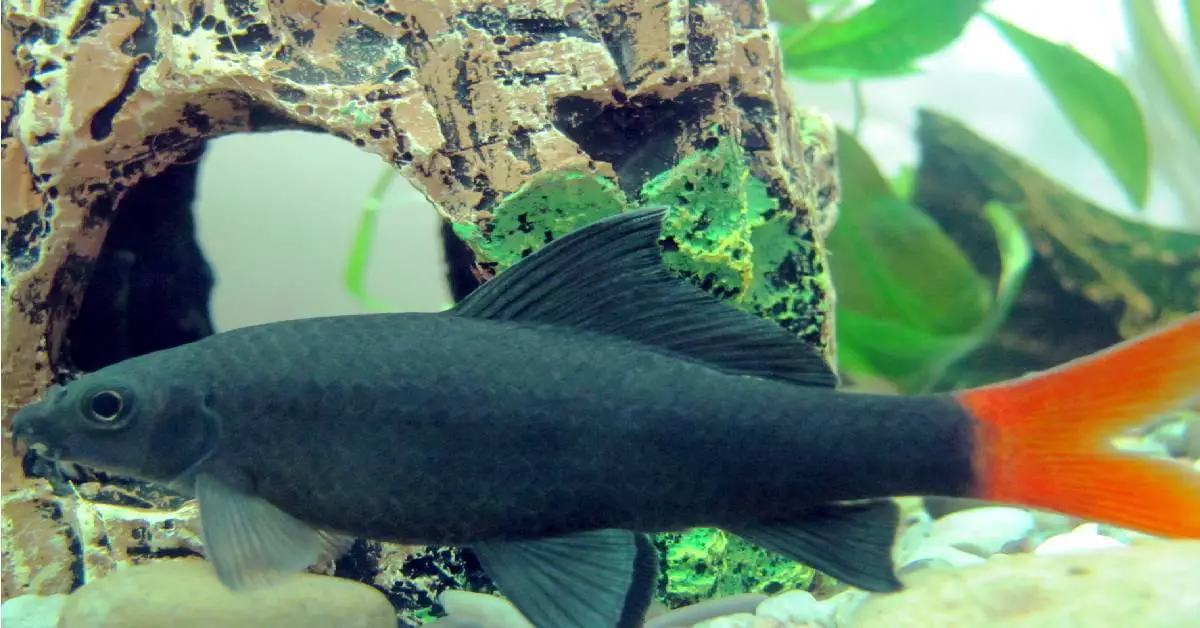
Redtail Sharks are a species of freshwater fish that originates from Thailand (Chao Phraya basins). They are a popular choice for beginner aquarists because they are relatively small and easy to care for.
Redtail Sharks typically grow to be about 4 to 6 inches long, although they can sometimes grow up to 8 inches. They prefer to live in warm waters with a pH level of 6.5-7.5 and a water temperature of 72-79 degrees Fahrenheit. When kept in captivity, Redtail Sharks need an aquarium that is at least 55 gallons in size.
It is important to create a peaceful environment for them, as they can become aggressive if they feel threatened. Redtail Sharks might also jump out of tanks, so it is important to have a lid that fits snugly on the tank. If you provide them with the proper environment and care, Redtail Sharks make great beginner fish for any aquarist.
Firemouth Cichlid (Thorichthys meeki)
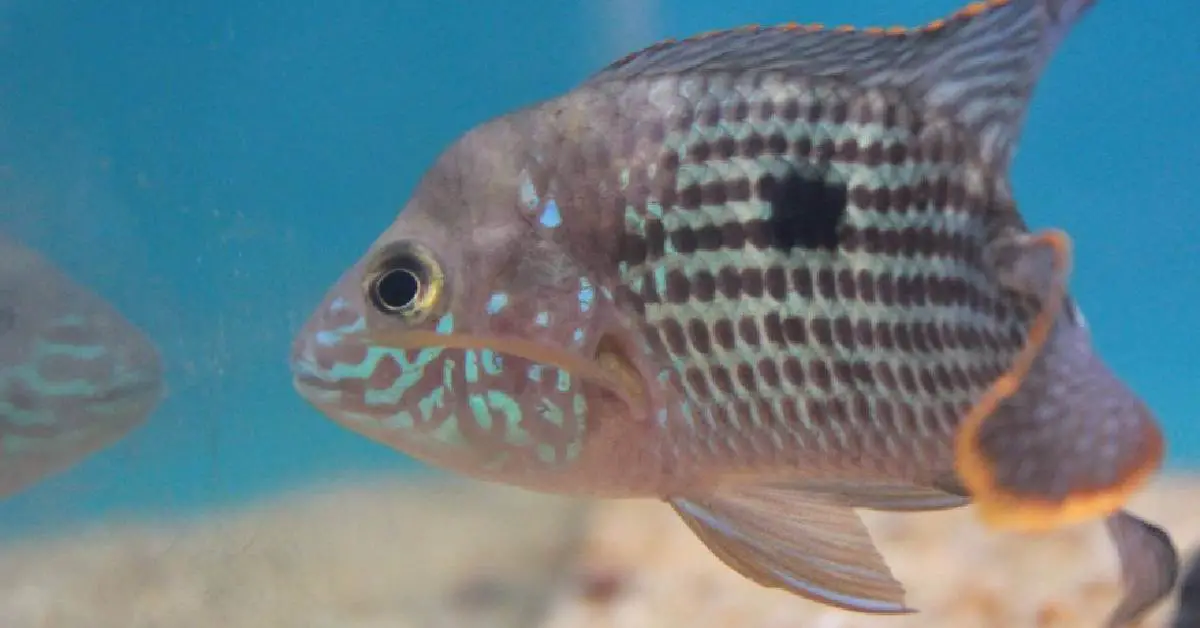
Although the Firemouth cichlid originates from Central America, it has become a popular freshwater fish in many parts of the world. One of the reasons for its popularity is that it is relatively easy to care for, making it the best fish choice for beginners.
When keeping Firemouth cichlids, it is important to provide them with a spacious tank that has plenty of hiding places. Keep in mind that Firemouth cichlids can reach up to 6 inches in length, so they will need a tank that is at least 30 gallons.
It is also important to maintain stable water parameters, as this fish is sensitive to changes in temperature (75–86 °F) and pH levels (6.5-8.0). Lastly, be aware that Firemouth cichlids are aggressive towards other fish, so it is best to keep them alone or with similarly sized fish.
Mollies (Poecilia sphenops)
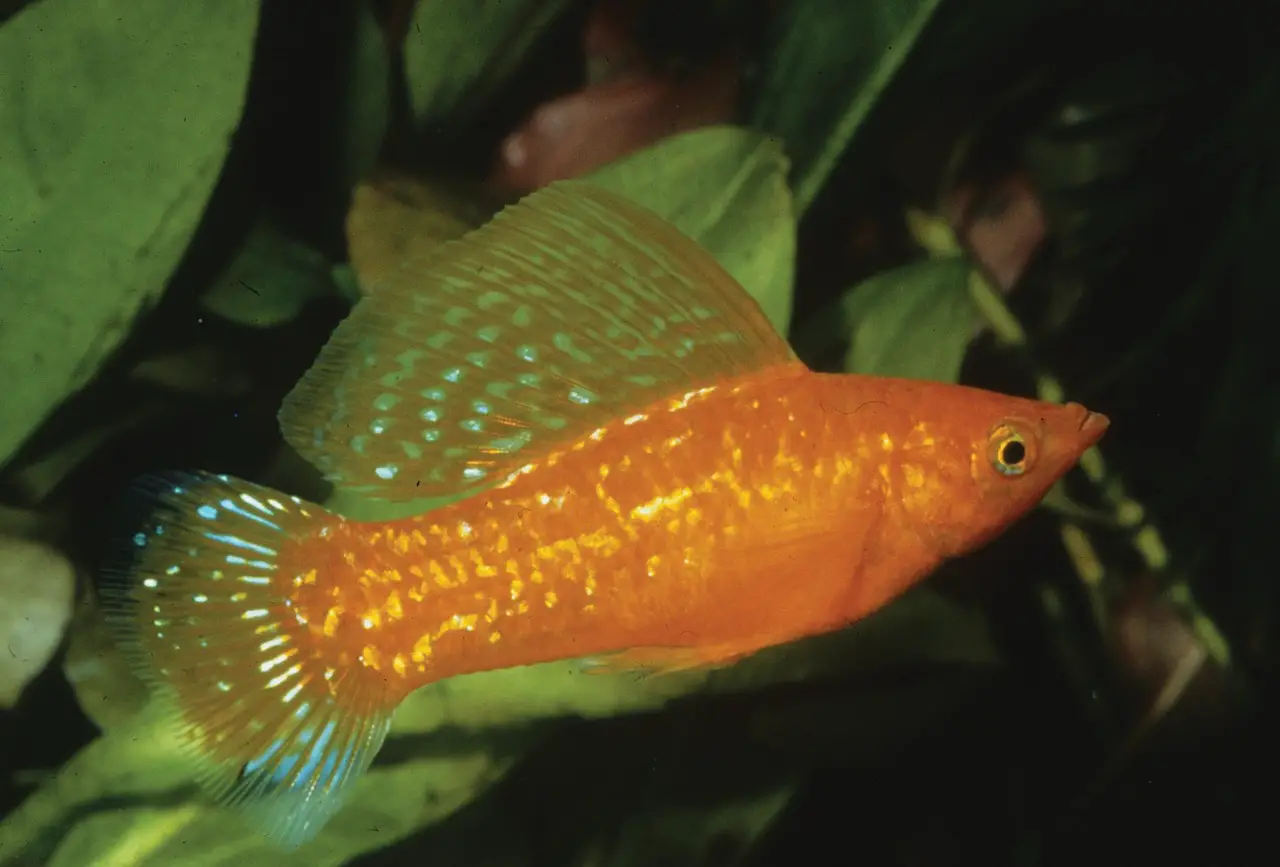
Mollies are one of the most popular fish for beginner aquarium enthusiasts. These hardy fish are native to fresh and brackish waters in Central and South America and can adapt to a wide range of water conditions. Mollies come in a variety of colors and patterns, and they can grow to be up to four and a half inches in length.
However, there are a few things to keep in mind when keeping mollies. They are active swimmers and require a tank of at least 10 gallons. They also prefer to be in groups, so it is best to purchase at least three individuals.
Mollies are livebearers, meaning that they give birth to live young rather than laying eggs. As a result, tanks with mollies should have plenty of hiding places for fry (baby fish) to hide.
Finally, mollies are related to piranhas, so they may nip at the fins of other fish in the tank. Overall, mollies make an excellent choice for beginner fishkeepers who are looking for an active and colorful addition to their tank.
So, here ends your options. I hope you for the best for your tank. What did you choose?
Worst Fish For Beginners
Picking the right fish for your aquarium can be tricky. But luckily, I think I have got you covered. Here’s a list of the worst fish for beginners, so you can avoid making a costly mistake.
Pufferfish
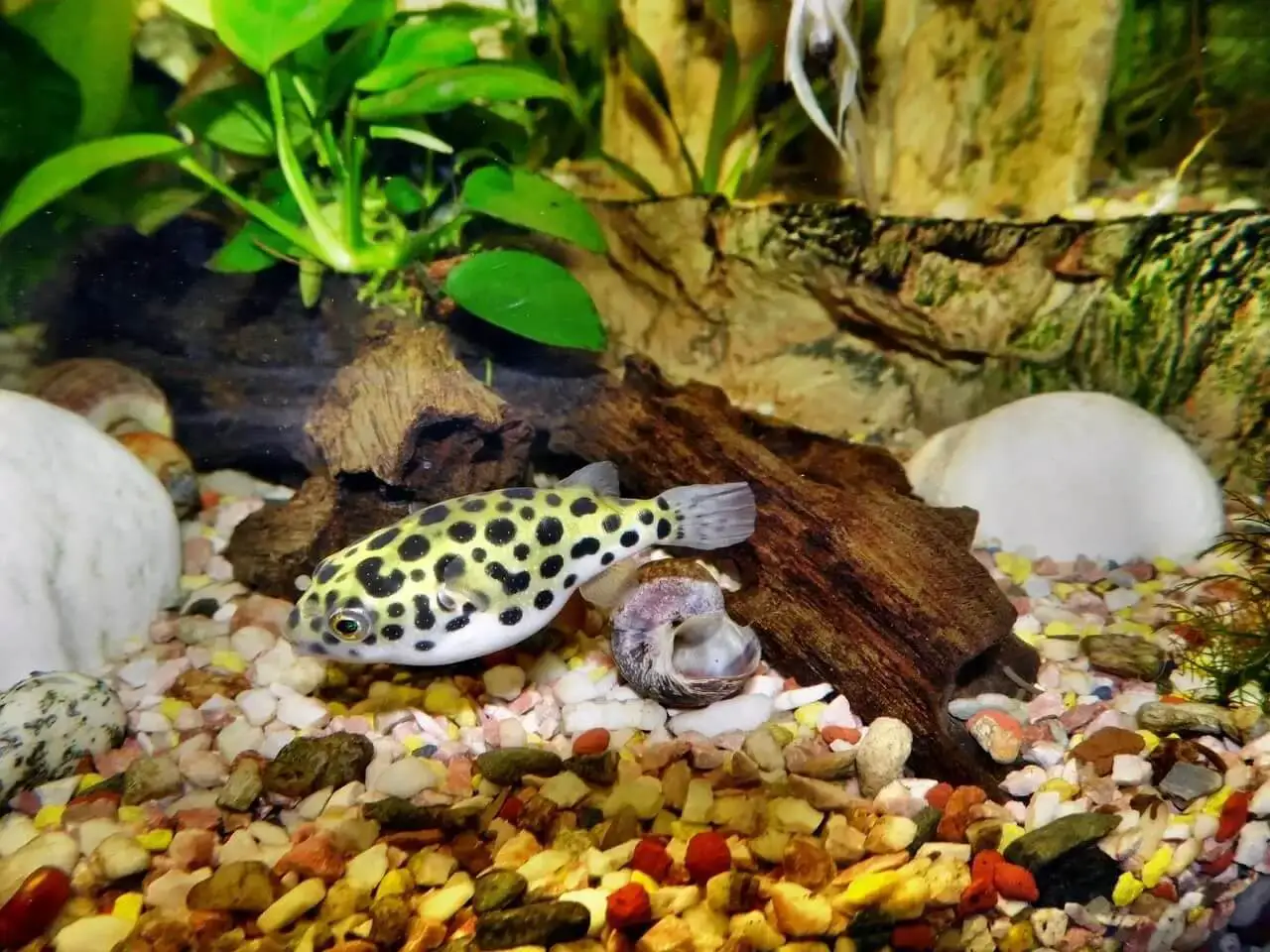
Pufferfish are one of the worst fish for beginners. They are very sensitive to changes in water quality and can be difficult to care for. They also have the potential to grow very large, so they are not a good choice for small aquariums.
Large Pleco
The large pleco is a popular fish for beginners. They are relatively easy to care for and can be a great addition to your aquarium. However, they can grow to be over 24 inches long and require a lot of space. They also produce a lot of waste, which can quickly foul your water.
Bala Shark
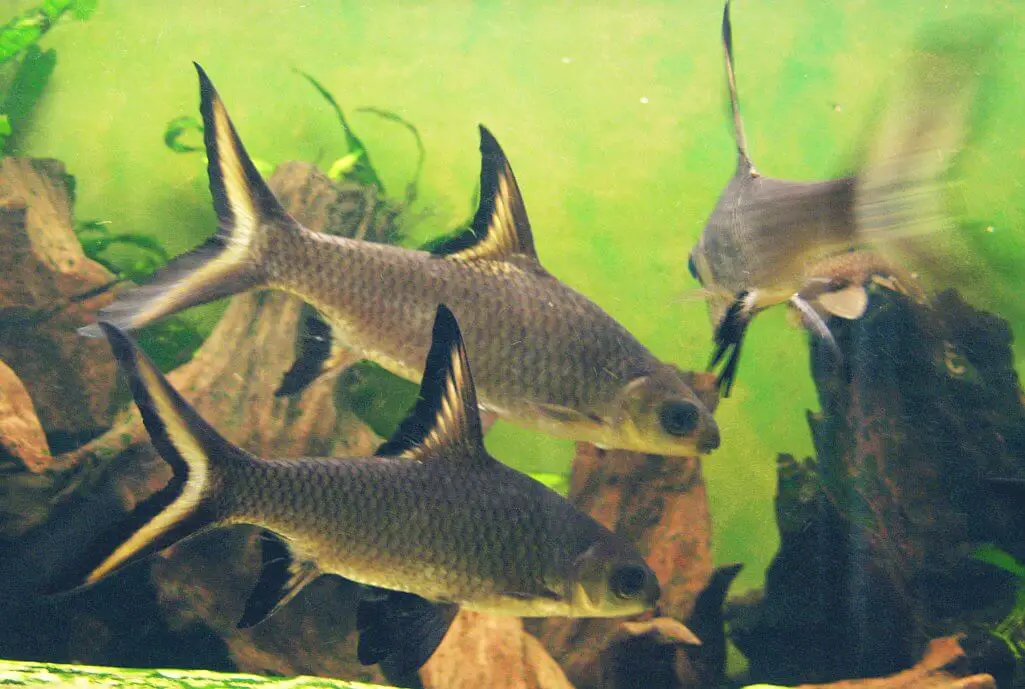
The Bala Shark is a beautiful fish, but it’s not the best choice for a beginner. These fish can grow rapidly and reach an adult size of 14 inches. Thus, you need a bigger tank for them. If you’re just starting out, it’s best to stick with a smaller fish.
Oscar Fish
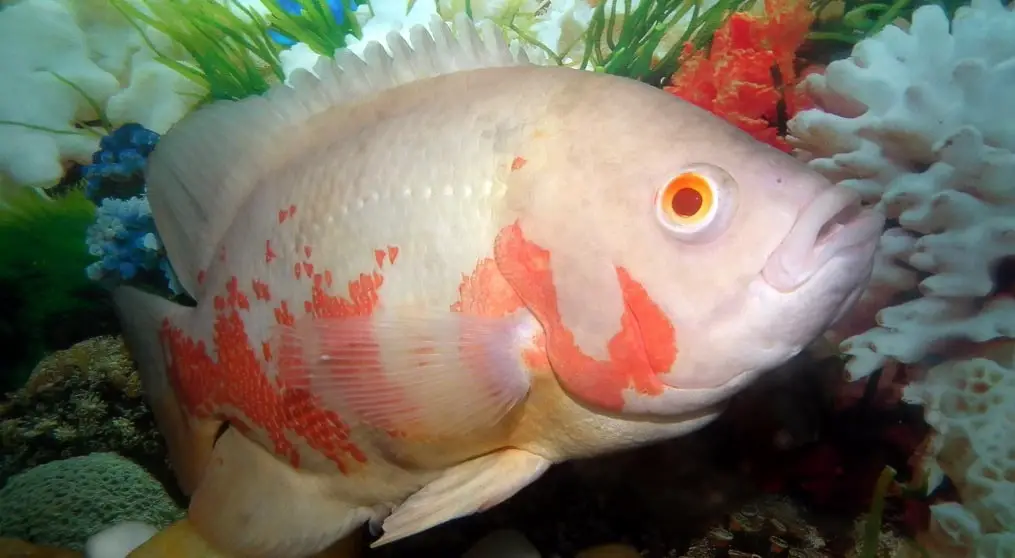
The Oscar fish is a beautiful freshwater fish that can grow up to 15 inches long. However, this fish is not for beginners. The Oscar fish is very aggressive and will eat smaller fish. They are jumpers, so you will need a lid on your aquarium.
Clown Loach
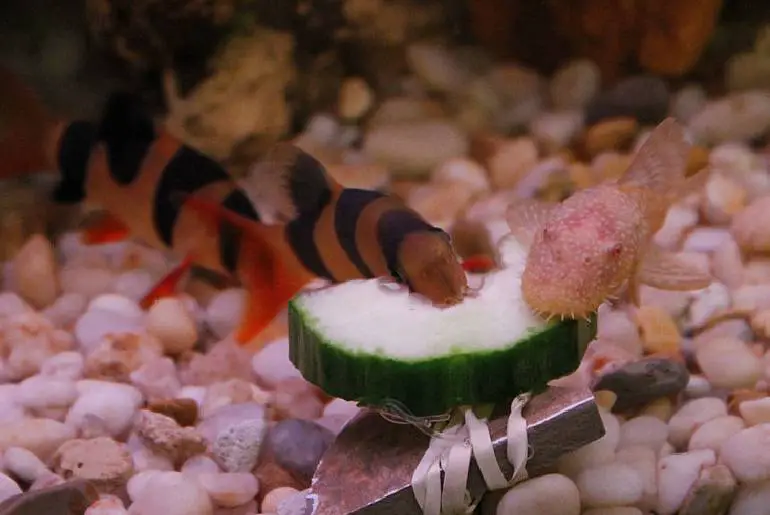
The Clown Loach is another aggressive freshwater fish. They can grow up to 12 inches long and are fin nippers. They are also schooling fish, so you will need to buy at least six of them.
If you plan on keeping this fish, you will probably need around 120 gallons tank. A tank this big is quite complicated to take care of. Thus, this fish isn’t for novices. You need to have some experience to handle such huge fish.
Angelfish
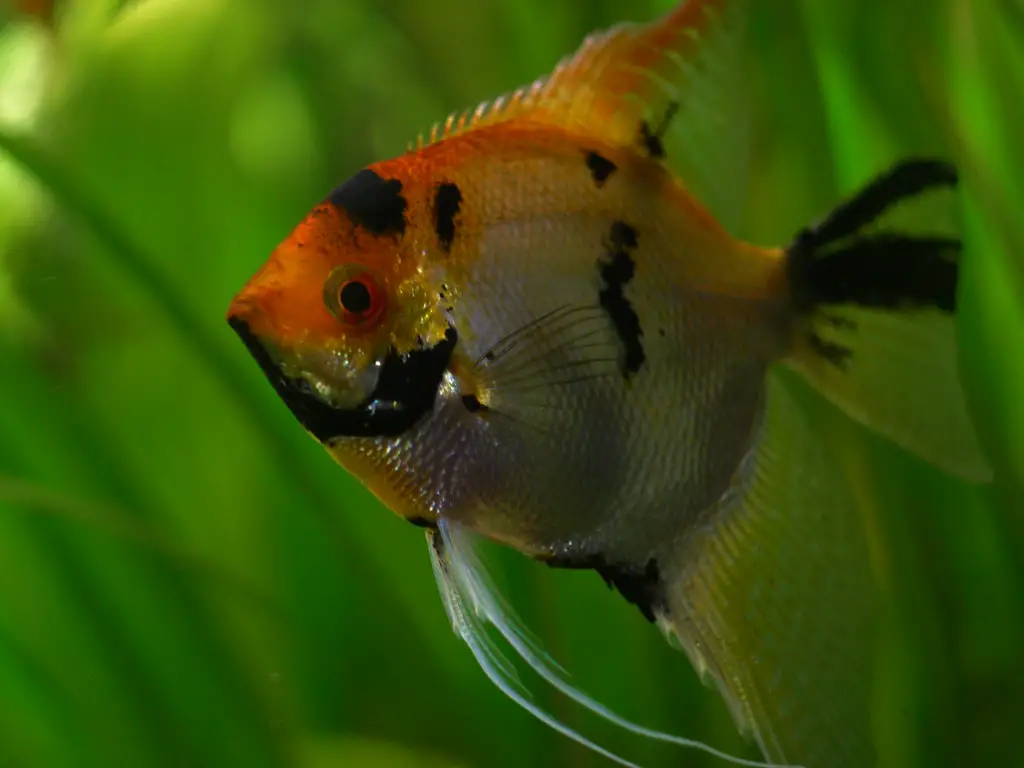
These fish are beautiful, but they are also very delicate. They can be difficult to care for and require a lot of attention. If you’re a beginner, it’s best to steer clear of these fish. You need some experience if you want them to live for long.
Betta Fish
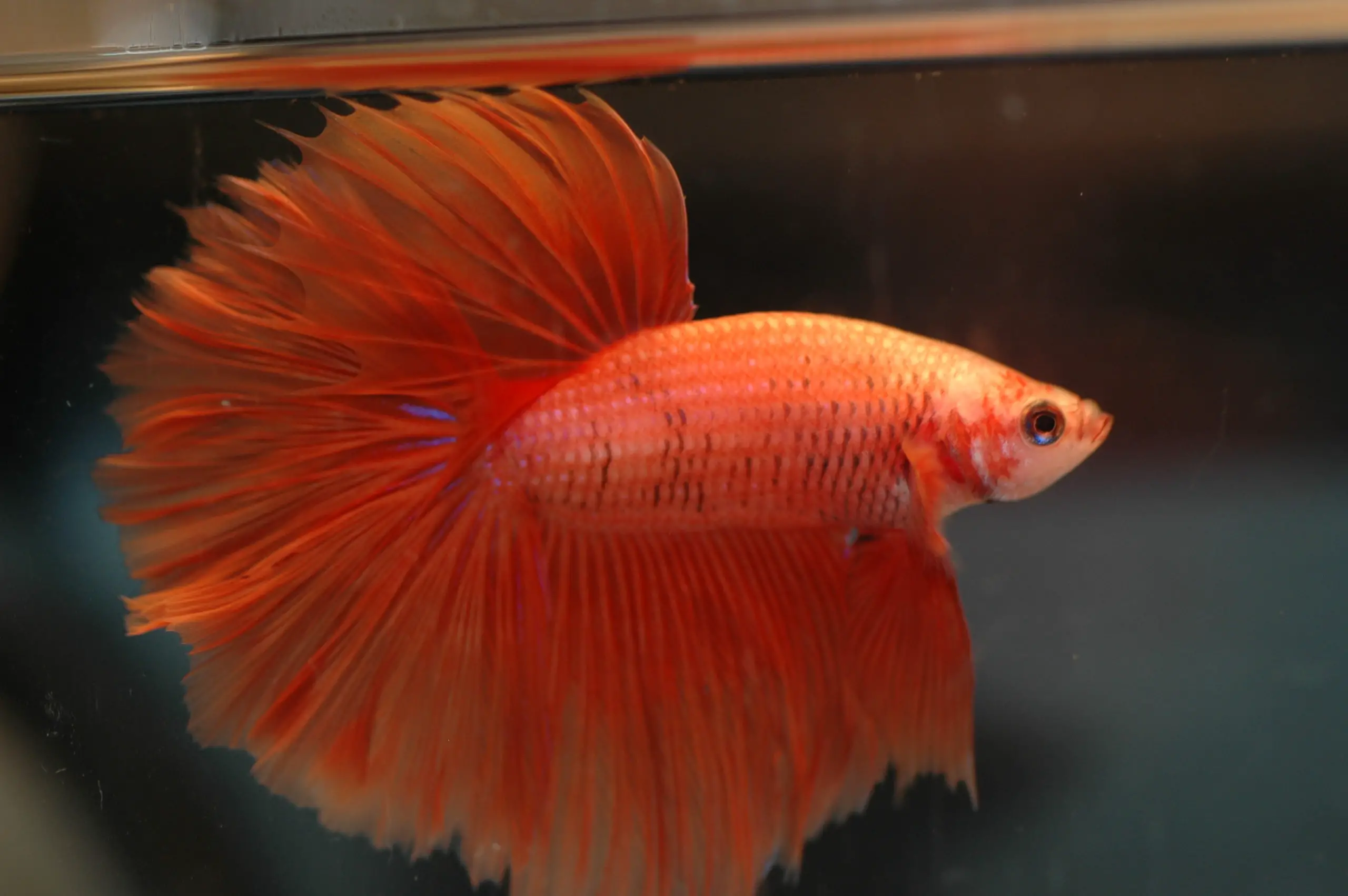
Betta fish are another popular choice for aquariums, but they can be difficult to care for. They can be quite aggressive if you fail to take proper care of them.
I wouldn’t say they are the worst choice for beginners. If you are careful enough, they can be one of the best fish for beginners. But, if you do not have time to give them the attention they need, it’s best to avoid these fish.
So, if you are thinking of keeping these fish, you are up for a huge risk. I would say you must stay on the safe side before. You can start keeping these fish, too, once you gather some experience.
Suggestion
After spending five years in fishkeeping, I’ve learned a thing or two about picking the best fish for beginners. Here are a few things you must do for healthy fish in your first aquarium:
- It is best to keep the fish of only one species when you are a novice.
- Always go for an optimum number of fish.
- Be very careful while adding new fish to your aquarium.
- Make sure that the fish you are buying is not sick.
- Do not overcrowd your tank.
- Choose a peaceful species of fish.
- For beginners, a canister filter is the best option.
- Never overfeed your fish.
- Aquariums need cycling before you add fish.
- Do not change all the water at once.
- Test the water regularly.
This is all I can say and suggest. The rest I am sure you will learn with experience. Enjoy fish keeping while being attentive to whatever you do. Best of luck!
Some FAQs
What Are The Common Mistakes Of Beginners?
One of the most common mistakes that beginners make is choosing the wrong fish. Another mistake is not properly caring for the fish. And then, ignore their fish and tank once they realize how much they need to work to keep them healthy and happy.
What Are Some Good Starter Fish?
Some good starter fish include the Betta, Goldfish, Guppy, Platy, and Swordtail. These fish are relatively easy to care for and can be a great introduction to the world of fish keeping.
How Do I Choose The Right Fish?
When choosing the right fish, it is important to consider the size of your tank, the water conditions, and your own personal level of experience. It is also important to do your research on the specific needs of each type of fish.
What Is The Best Number Of Fish To Keep For Beginners?
A good rule of thumb is to start with one fish per gallon of water. But it is not always applicable. So, as a novice, you can keep one fish in two gallons. Just to avoid overcrowding your tank. As you become more experienced, you can add more fish to your tank.
Conclusion
Concluding up, these are the best fish for beginners. You have your options to choose from. Keep your calm and choose wisely. Wish you the best in a new experience.
If you have any questions or comments, please feel free to leave them below. Hoping to meet you soon with other interesting subjects about fish. Thanks for reading!

